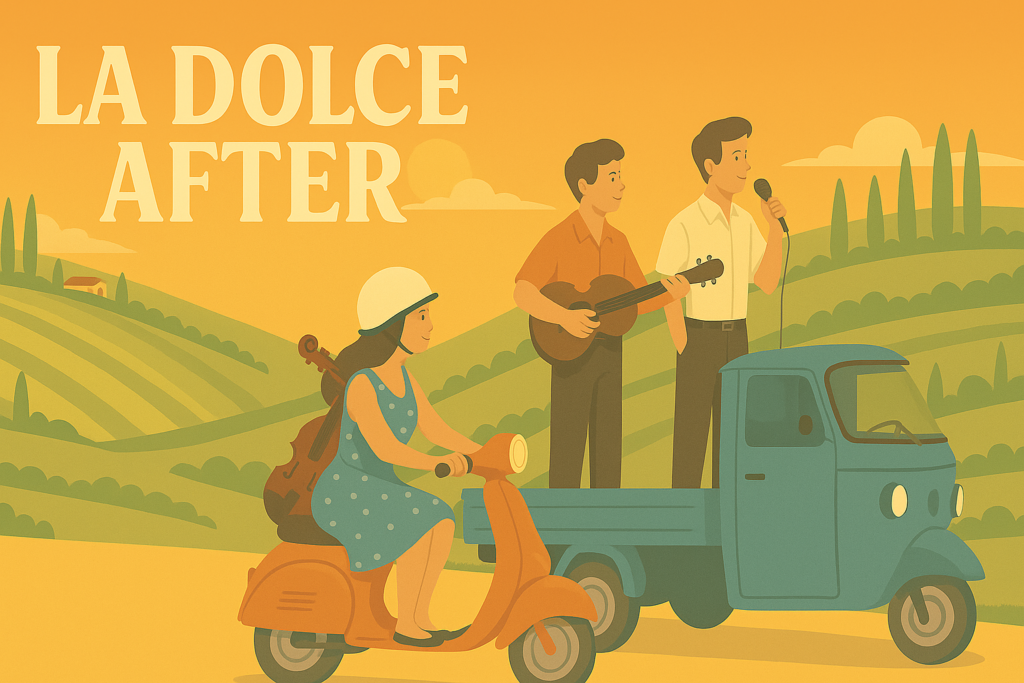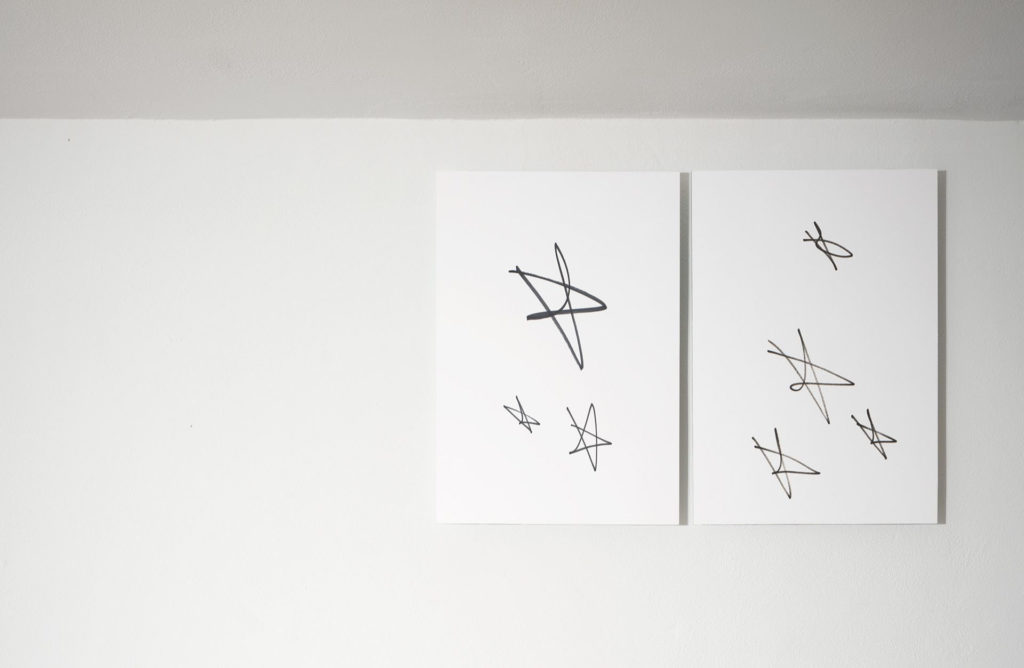SUPERCATASTROFE
QUALI STORIE PER LA FINE DEL MONDO
GOD IS GREEN
The festival dedicated to sustainability and the future, from Manifattura Tabacchi.
III Edition
9-18 October 2020
Curated by NERO
With the collaboration of Medusa, Not, Parasite 2.0, Threes, Andreco, Clara Ciccioni, Federica Timeto and Miriam Tola
Produced by NAM – Not A Museum
Access will be in full compliance with the measures that the Italian Government is taking to combat the spread of Covid-19.
From 9 to 18 October 2020, Manifattura Tabacchi will once again turn its attention to spreading public awareness with God is Green, filling its spaces with videos, sounds, and words which reflect upon the climate emergency and the impact of mankind on the natural environment, in order to look into strategies and practices that will help us to “survive on an infected planet”, to quote the words of philosopher Donna Haraway.
SUPERCATASTROPHE aims to bring together some of the leading exponents from the rich network of artists, thinkers, activists, and cultural operators who have begun to reflect in original ways upon the geological era we call the Anthropocene, irremediably marked by the presence of mankind.
EVENTS
SUPERCATASTROFE. Quali storie per la fine del mondo
Exhibition open to the public 9-18 October | 1st Floor B9 and Basement.
9 October: 19:00-00:00 (last entrance 23:15)
10 October: 17:00-00:00 (last entrance 23:15)
11 October: 17:00-23:00 (last entrance 22:15)
From 12 to 15 October: 17:00-21:00 (last entrance 20:15)
16 e 17 October: 17:00-23:00 (last entrance 22:15)
18 October: 17:00-21:00 (last entrance 20:15)
Exhibition of artists’ posters
Open to the public 9-18 October | Art Residencies Ateliers.
Artists present on Friday 9 and Saturday 10 October, 19:00-21:00.
A limited number of posters will be available to the public.
BY RESERVATION
Friday 9 TALK Chthulucene. Sopravvivere su un pianeta infetto
Saturday 10 LECTURE/PERFORMANCE Future climate / Andreco
The talks will be live streamed on the Facebook event page SUPERCATASTROPHE – God is Green III Edition.
facebook event
NERO, an international publishing house devoted to art, criticism and contemporary culture, sets out the ideas and concepts behind the festival:
“The pandemic of 2020 and the scorching summers which, thanks to the climate emergency, we have become accustomed to, are symptoms of a catastrophe already underway, and there is little that the green economy and any ‘sustainable’ conversion can do to fight back. It is a catastrophe which is forcing mankind to ask questions that would have been unthinkable before now: are we on the verge of extinction? How is it possible to live on a planet whose resources have been depleted by mankind? What ties can we form in the middle of an environmental apocalypse, and also within the current political, economic, and societal situation?”
Within this scenario, SUPERCATASTROPHE assumes the form of a ‘hyperobject’ exhibition, a concept which the philosopher and ecologist Timothy Morton has used to describe a particular genre of ‘objects’ where we can perceive their boundaries but never have a complete and clear picture of what they actually are. The exhibition will create an immersive environment within the spaces at Manifattura Tabacchi, with videos, literature, sounds and spoken words forming a kind of media archive on the climate emergency and the impact the mankind is having on planet Earth.
“A hyperobject could be a black hole. A hyperobject could be the oil field in the area of Lago Agrio, in Ecuador, or the Everglades reserve in Florida. A hyperobject could be a biosphere or the solar system. A hyperobject could be the complex sum of all of the nuclear material present on Earth” Hyperobjects (NERO Editions, 2018)
The outfitting of the exhibition forms part of the exhibition itself and is curated by the artistic and architectural collective Parasite 2.0, using reprocessed discarded items and fluorescent pigments as a means of reflecting on the relationship between the natural habitat and human intervention.
Within the outfitting by Parasite 2.0 there is a wide selection of videos from Medusa, a leading Italian newsletter on the Anthropocene, which has scoured the web and Youtube to collate an alienating portrait of a planet in collapse. Accompanying this spectacle will be a sound collage which brings together research carried out by Threes in the area of experimental electronic music and environmental sustainability, and there will also be a selection of literature from Not, creating a library of volumes especially selected for the occasion, which the public are free to use and consume.
For those looking to go deeper on a technical level into the themes of SUPERCATASTROPHE, there will be two public talks. The first will take place on 9 October at 19:30 with researchers and scholars Clara Ciccioni, Federica Timeto and Miriam Tola, drawing links between the notion of the Anthropocene and the writings of American philosopher Donna Haraway, one of the leading theorists of our time. The second is a performance/lecture from artist and engineer Andreco on 10 October at 18:00, looking into the relationship between art, science and the environment in the middle of an environmental crisis and a pandemic.
The talks will be live streamed on the Facebook event page SUPERCATASTROPHE – God is Green III Edition.
Taken together, everyone involved in SUPERCATASTROPHE will be exploring the many possible “stories to tell for the end of the world”, embracing the complexity and the fragmentation of our contemporary world, and giving the viewer the opportunity to experience the exhibition in a free and personal way.
In support of the festival’s events, there will be an exhibition of posters specifically made for the occasion of God is Green by Ludovica Anversa, Ambra Castagnetti, Diana De Luca, Chiara Gambirasio, Nicola Ghirardelli, and Max Mondini, the artists in residency for L’armonia, the 2020-2021 edition of the Art Residencies programme from Manifattura Tabacchi, curated by Sergio Risaliti.

NAM – Not A Museum – is Manifattura Tabacchi’s contemporary art programm. NAM is based on the principle of the interdisciplinary nature of the arts, community involvement, and an investigation of the relationship between art, nature, and science.
nam on instagram

NERO is an international publishing house devoted to art, criticism and contemporary culture.
nero

Medusa is a newsletter dedicated to the Anthropocene and mankind’s impact on the Earth, from Matteo De Giuli and Nicolò Porcelluzzi.
medusa on instagram

Not is both an online magazine and a series of books published by NERO, dedicated to theory, radical politics and speculative thinking.
not

Parasite 2.0 is a collective based in Brussels and Milan which looks into the state of human habitat through a mix of architecture, design and art.
parasite 2.0

Threes Production is a group of organisers and curators which, alongside other projects, produces Terraforma, an international festival which combines music with environmental sustainability.
threes production

Andreco is a visual artist and activist with a PhD in environmental engineering. His work looks into the relationship between urban space and the natural landscape, between mankind and the environment, creating projects that bring together his unique multidisciplinary artistic research.
andreco on instagram
Clara Ciccioni
Clara Ciccioni is an independent researcher with a PhD in History and Social Sciences. She has worked with various Italian publishers as an editor and translator. She is the editor of the column Not from NERO Editions, as well as the co-translator of Chthulucene by Donna Haraway (NERO, 2019).
Federica Timeto
Federica Timeto teaches Sociology at the Ca’ Foscari University in Venice, working in the fields of feminist theory, cultural studies, and critical animal studies. Her latest book is ‘Bestiario Haraway. Per un femminismo multispecie’ (Mimesis, 2020).
Miriam Tola
Miriam Tola teachers Environmental Humanities at the University of Lausanne. Her research looks into feminist studies, post-colonial theory and political ecology.

